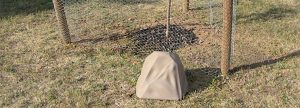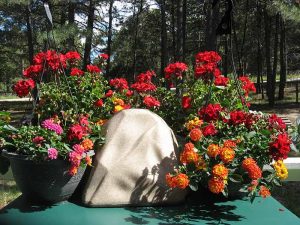Watering Techniques For Your Garden
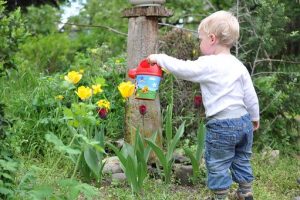
Water is essential for plants, trees and shrubs not just to enable them stand tall but for many chemical processes taking place within the plants. Believe it or not, improper watering is the number one cause of plant death, pest and diseases. At first glance, watering plants may seem like a no-brainer, but in fact it’s one of the most challenging chores for gardening enthusiasts. With that being said, the main focus of this article are some simple garden watering techniques for gardeners However, knowing why, when and how to conduct these techniques efficiently will let you be a better gardener and transform your yard into an eco-friendly sanctuary.
Consequences of Improper Watering
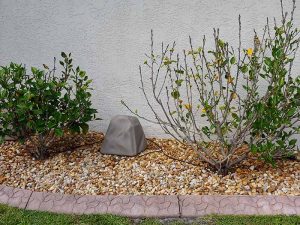
Before
Most plants take up water from the soil through the roots, and water is released by plants into the atmosphere through their foliage. The suction effect causes the plant to continuously pull water up from the soil. Damage due to incorrect watering can lead to wilting and collapse of plants. Those vegetation that survive improper watering fail to flourish and result in weak growth. With some plants, even one missed watering session can result in poor growth a month later. And worst of all, having to spray for pests and diseases on these plants that deteriorate due to faulty watering process.
Watering On Demand
The truth is, there is no hard and fast rule for when to water plants, trees and shrubs in your yard. Watering is required only when plants need it. Some gardeners like to put their yards on a predetermined watering schedule. Others do it on a case-by-case basis. Remember that not all plants cooperate with daily watering and may want gap days to settle themselves or fight off thirst, pests and diseases on their own. When to water your yard mainly depends on a wide range of factors. Every region, location and site where your vegetation is growing is different, so are the plants of various species. Determining when to water therefore relies on the type of plant, season of the year, light, humidity level and soil density.
Type of Vegetation
It is important to know the type of plant that requires watering on a regular basis. Plants are sold in stores along with labels, and then there are plenty of encyclopedia and planting guides on the internet that talk about plant varieties you are dealing with in your yard. Most plants, including citrus and violets, like to be watered and kept moist all the time, while cactus prefer dry soil in between watering session. Some plants are very particular about how much you are watering them. Plants with large leaves require more water than those with small leaves. Succulents, on the other hand, retain moisture and require less water, and attention, compared to plants with soft leaves. Nevertheless, most plants prefer water when the soil beneath is dry. Pot-bound plants need constant upkeep with regular watering sessions because their roots tend to use a lot of resource in the limited amount of soil in the pots they are contained.
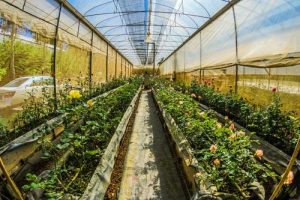
Time Of The Season
Time of the year is another factor to consider when watering your yard as well as choosing an efficient irrigation system. Summer and spring tend to be warm and dry, which is when your yard needs more water because the plants are thirsty more often. On the flip side, winter and fall seasons present a situation where some plants go into a dormant state and stop growing. Identifying such plants and watering efficiently can go a long way in protecting those plants and helping them thrive in your yard.
Temperature, Sunlight and Humidity
All the factors mentioned here directly affect how your garden plants, trees and shrubs will grow. Plants that are under the sun most of the time require more water as a rule of thumb. Those in high humidity area are able to retain moisture and thus require less watering. The atmospheric temperature of your region also plays a huge role in when to water your plants.
When to Consider Watering
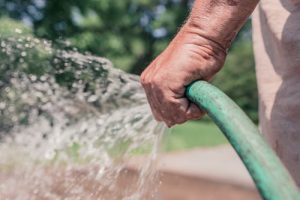
Watering should be done in the early morning, if possible. This is the best time of the day to water your yard for obvious reason – water temperature. However, if night is the only time you can water, do so instead of starving the plants. Nighttime watering also gives you a chance to adjust water amount accordingly. If you are watering at night, adjust the system to make sure that the water doesn’t get at the crown or leaves of the plant directly. Water sitting on the leaves overnight may cause fungal disease. Too cold water can send plants into shock and result in dark spots on the leaves.
Watering On Vacation
For gardening enthusiasts who vacation frequently or have limited time due to busy schedule, automatic watering methods are the best way to go. Drip watering system, residential system or any automatic technique to water your yard works best for many types of vegetation. A similar approach is self-watering pots. These pots are usually made of plastic and contain a water reservoir that taps the stored water whenever the soil dries out.
Group Gardening Plants
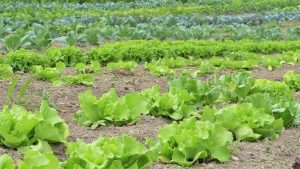
Choose plants depending on the location of your yard and the type of soil present in each section. Plants that are hardy for moisture condition in your property are best suited when you are considering using little water or irregular watering schedule for your yard. If there are plants that need extra watering, group them together into one spot to create planting zones through which you can run a water system, such as the end of a downspout or hose connected to a rain water barrel. A French drain or rock river system is well suited for plants that are grouped. Even if automatic water system is used, plants that are grouped together will consume less water compared to when they are planted separately.
Watering Techniques Simplified
1. Conventional Irrigation System
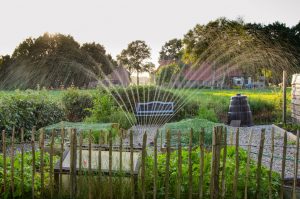
Watering system used in most residential properties are underground system that turn on regularly according to a scheduled timing. They can be set to automatic watering or used manually to water your yard. With automatic setting, you can set the time, day, interval and for how long the system should water your lawn, plants and other vegetation. With today’s technology and professional planting guides, these systems come with highly sophisticated features and can be programmed efficiently according to planting zones, watering requirements, season of the year and other criteria. The new systems are also easy to maintain, replace or repair. Underground leaks in latest systems are negligible or totally absent in these systems.
2. Drip Irrigation System
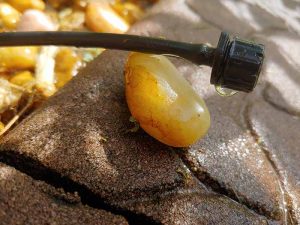
Those little pipes above ground that water plants only when needed are a part of drip irrigation system. This system can be very useful for a yard with vegetables and greenhouses. You can easily configure a drip watering system to fit your plant watering needs. Drip system can save water and eliminate the need for manual watering as well.
3. Rain Barrels
Rain barrels are a great way to make use of all the water that falls onto your roof during rain. Barrels can be placed at every downspout of your property and water collected through downspout diverters, pipes and fittings. There are many ways to utilize rain water through these barrels. You could use a tap on the barrel to draw water or hook a hose to the barrel tap and attach to a soaker hose to water the garden. By raising the height of the barrel, you can increase the water pressure to water larger planting zones of your yard.
4. French Drains
French drains can be an alternative to rain water barrels. In this system, water runs from the downspout to soak the soil from below. This needs excavation right from the spot where your downspout is located out into your yard and ending in a shallow well like structure which can be filled with river rocks. French drains not only use rain water efficiently but keep the soil moist without using any amount of energy.
5. Soaker Hoses
Soaker hoses facilitate easy watering of your planting beds. They are placed under the mulch to let the water into the soil close to the plant roots. The water in the hose is released along the length of the hose through tiny holes. Soaker hoses can be attached to rain water barrels or automatic watering systems as needed. This system is beneficial when plants are newly planted and adequate amount of water is normally required for the first few weeks.
6. Rock Rivers
River rock watering system is one of the easiest and most affordable ways to water your garden. Here, water from your downspout is channeled into your yard by digging a trench and filling it with rocks. To ensure that the water is not draining back against the foundation of your house, the river needs to have a slight downward slope and be a little away from house.
7. Manual Watering

You can use the good old method of watering – by hand and a water-hose connected to a tap. Some cases call for manual watering and is absolutely necessary for the well-being of the plants. For example, if there are plants at the entrance of your yard that are out of reach for your automatic watering system, watering them manually will keep them looking fresh and healthy. You could place plants that bloom in the same period grouped together, so that it’s easier to water them with a can.
8. Watering Rocks
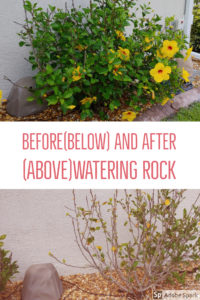
Another alternative for conventional watering system, watering rocks system is a drip system that has become popular among residence property owners in recent years. It is also a low-cost alternative to your expensive automatic watering system and solves most of the issues that are seen in conventional versions such as water wastage, damage to hose, irregular watering, excessive watering and broken pipes. Watering rocks not only water your plants but add a natural touch to the eco-system of your property.
We hope you have enjoyed this article and the information and links included. We hope you will visit our website at www.watering-rocks for more information and articles. Also, take advantage of our free booklet, “101 Ways to Save Water & Money in the Landscape”
